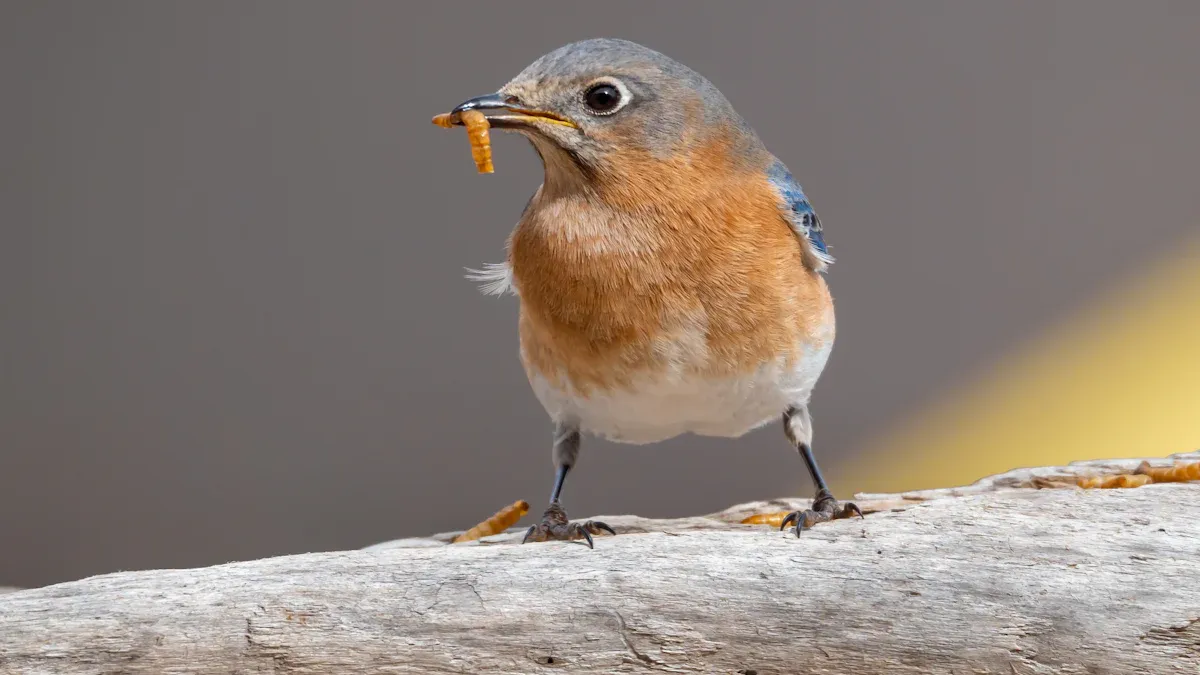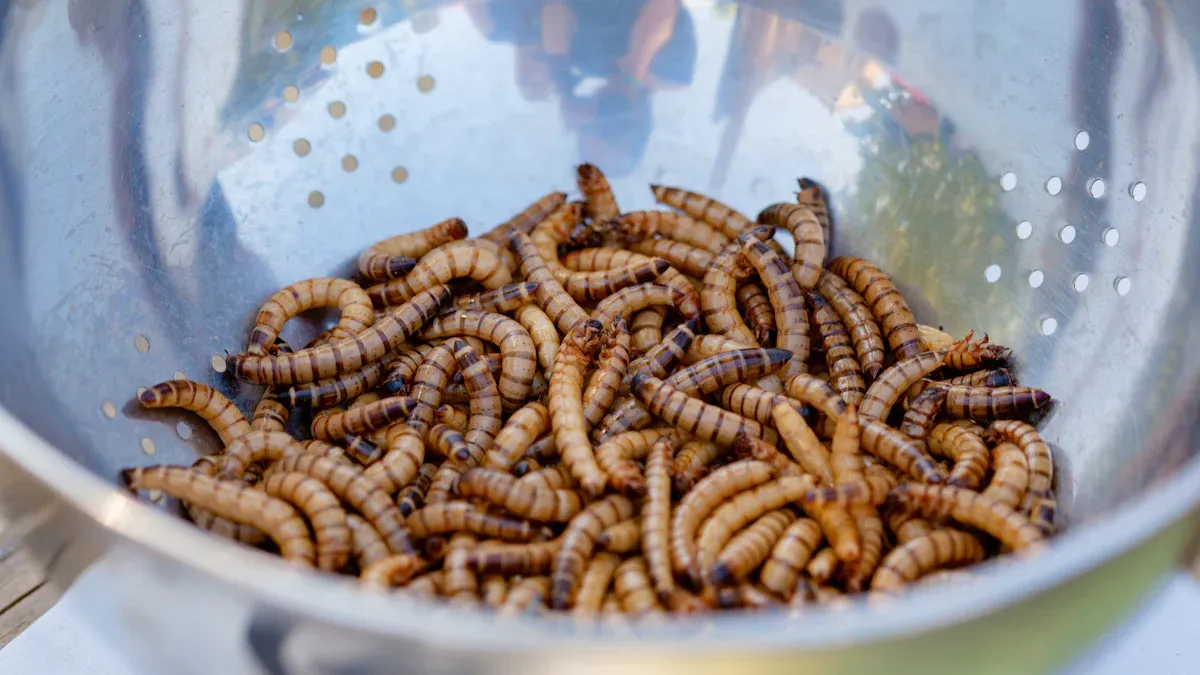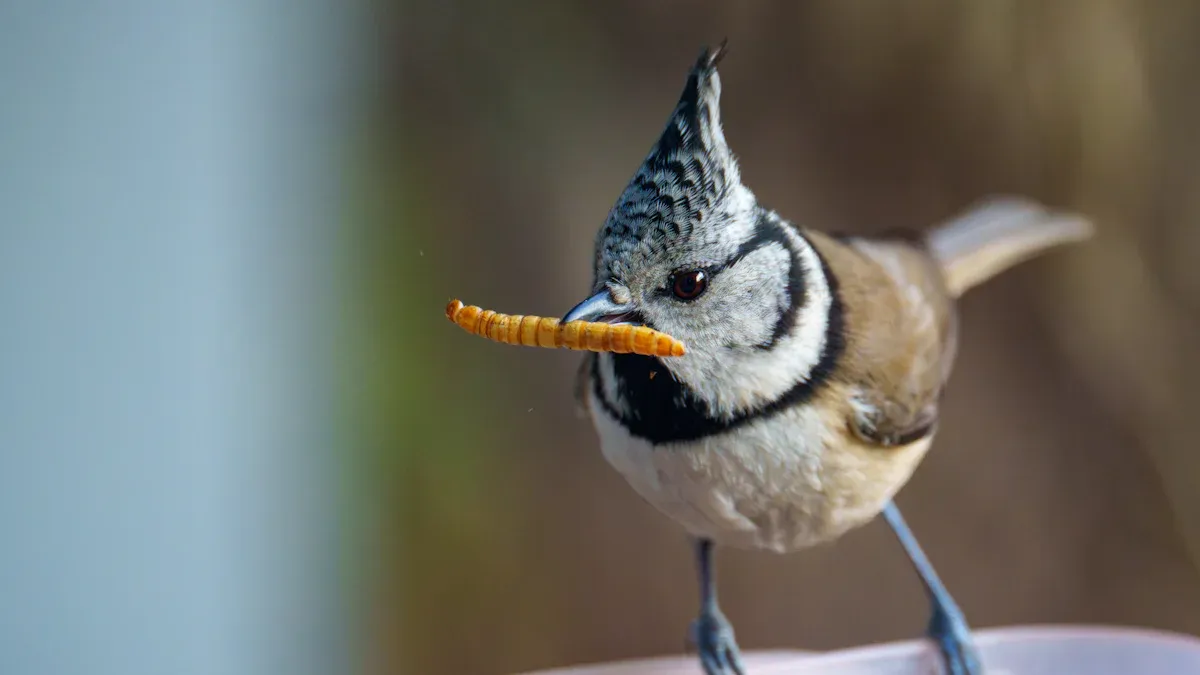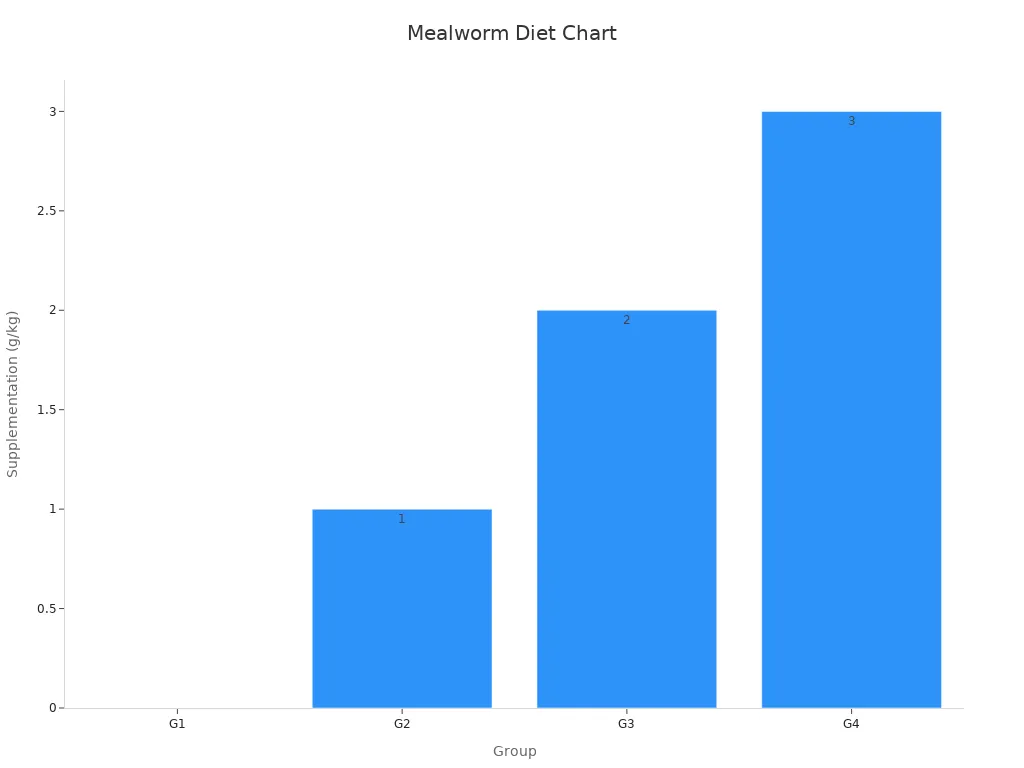
Birds thrive when they receive the right nutrition. Proper food helps them maintain energy, grow strong feathers, and stay healthy year-round. Dried mealworms are a fantastic addition to their diet. Packed with 40.7% to 52.3% protein, these treats support energy, growth, and vitality. Bird seed mealworms are a perfect choice for bird lovers.
Key Takeaways
- Dried mealworms are a high-protein food source, providing 40.7% to 52.3% protein. This boosts energy and supports growth in birds.
- Mealworms contain essential fats (25-30%) that help birds maintain body heat during colder months. Offer them in winter for added energy.
- Mix mealworms with seeds, nuts, or fruits to create a balanced diet. This ensures birds receive all necessary nutrients for health and vitality.
Nutritional Benefits of Dried Mealworms

High Protein Content for Energy and Growth
Protein is essential for birds to stay active and grow strong. Dried mealworms are packed with protein, making them a fantastic energy source. Birds need this nutrient to build muscles, repair tissues, and support their overall health. Studies have shown that providing mealworms to birds can lead to noticeable improvements. For example:
- Songbirds given 30 grams of mealworms daily experienced increased reproductive success.
- House wren nestlings fed supplementary food were about 2% heavier than those without.
- Cactus wren broods receiving mealworms and caterpillars gained between 10.5 and 20 grams compared to control groups.
These findings highlight how mealworms can boost growth and vitality in birds. Adding them to a bird’s diet ensures they get the protein they need to thrive.
Essential Fats for Energy During Colder Months
When temperatures drop, birds need extra energy to stay warm. Dried mealworms contain 25-30% fat, which provides a rich energy source. This fat helps birds maintain their body heat and survive harsh winters. Including mealworms in their diet during colder months can make a big difference. It’s like giving them a cozy blanket of nutrition to keep them going.
팁: Offer mealworms in winter to help birds conserve energy and stay healthy.
Vitamins and Minerals for Feather and Bone Health
Feathers and bones are vital for a bird’s survival. Dried mealworms are rich in vitamins and minerals that support these critical functions. Nutrients like calcium strengthen bones, while vitamins like B12 promote healthy feather growth. Birds with strong feathers can fly better and stay protected from the elements. A diet that includes mealworms ensures they get these essential nutrients, keeping them in top condition.
Year-Round Availability for Consistent Nutrition
One of the best things about dried mealworms is their availability. They can be found in pet shops or online throughout the year. This makes it easy for bird enthusiasts to provide consistent nutrition, no matter the season. Supplementing a bird’s diet with mealworms improves survival rates and overall health. For instance:
- Female pied flycatchers fed mealworms had a 58% survival rate compared to 27% for those without.
- Mealworms can be fed year-round but work best as a supplement to a balanced diet.
By offering bird seed mealworms regularly, bird lovers can ensure their feathered friends stay healthy and happy all year long.
Best Practices for Feeding Bird Seed Mealworms

Incorporating Mealworms into a Balanced Diet
Birds need a variety of nutrients to stay healthy, and dried mealworms are a great addition to their diet. However, they work best when combined with other foods like seeds, nuts, and fruits. This ensures birds receive a balanced mix of protein, fats, carbohydrates, and essential vitamins.
Research shows that different levels of mealworm supplementation can impact bird health. For example:
| Group | Mealworm Scales Supplementation (g/kg) | Observations |
|---|---|---|
| G1 | 0 | Control group with basal diet |
| G2 | 1 | Basal diet with low supplementation |
| G3 | 2 | Basal diet with moderate supplementation |
| G4 | 3 | Basal diet with high supplementation |
Moderate supplementation (2 g/kg) often yields the best results, providing birds with the nutrients they need without overwhelming their diet.
팁: Mix bird seed mealworms with seeds or nuts to create a nutrient-rich blend that supports feather growth, bone strength, and energy levels.
Using Mealworms as a Supplement, Not a Standalone Food
Dried mealworms are packed with protein and fats, but they lack certain nutrients like carbohydrates and fiber. Birds need a diverse diet to thrive, especially during migration or nesting seasons. Mealworms should complement other food sources rather than replace them entirely.
Studies highlight the importance of dietary balance for migratory birds. The fatty acid composition of mealworms supports energy utilization but works best when paired with other foods. For instance:
- Mealworms contain approximately 45% protein, 33% fats, and 7% carbohydrates.
- Their fatty acids help birds build fat stores, which are crucial during long flights.
By mixing mealworms with seeds, fruits, or grains, bird enthusiasts can ensure their feathered friends get everything they need to stay healthy and active.
Choosing High-Quality Dried Mealworms for Optimal Results
Not all dried mealworms are created equal. High-quality options provide better nutrition and are safer for birds. Products like TradeKing Dried Mealworms meet veterinarian-certified standards, ensuring purity and nutritional value.
When selecting mealworms, look for:
- Veterinarian Certification: Guarantees the product meets high-quality benchmarks.
- Nutritional Value: Comparable to live mealworms, offering essential nutrients like protein and fats.
- Packaging: Airtight containers preserve freshness and prevent contamination.
참고 : High-quality bird seed mealworms improve survival rates and overall health, making them a reliable choice for bird lovers.

Preparation Tips for Feeding Mealworms
Soaking Mealworms for Hydration and Easier Consumption
Soaking dried mealworms before feeding them to birds can make a big difference. This simple step softens the mealworms, making them easier for birds to eat and digest. It’s especially helpful when live mealworms aren’t available. For example, a single parent bird caring for nestlings may struggle to find live food. Offering soaked dried mealworms ensures the nestlings get the hydration they need.
To soak mealworms, place them in a bowl of warm water for about 20 minutes. Once they’re plump and soft, drain the water and serve them to your feathered friends. Birds often prefer hydrated mealworms because they mimic the texture of live ones.
팁: Use soaked mealworms during nesting season to support parent birds and their chicks.
Mixing Mealworms with Bird Seed or Other Foods
Mealworms work best when mixed with other foods. Combining them with bird seed, nuts, or fruits creates a balanced meal that provides protein, fats, and carbohydrates. This mix appeals to a wide variety of birds, from songbirds to woodpeckers.
To prepare a mix, combine equal parts dried mealworms and bird seed in a feeder or bowl. Adding chopped fruits or crushed nuts can make the blend even more nutritious. Birds enjoy variety, and a mix keeps them coming back for more.
참고 : Mixing mealworms with other foods ensures birds get a complete diet, supporting their energy and growth.
Offering Mealworms in Feeders, on Tables, or on the Ground
Where you place mealworms matters. Different birds have different feeding habits, so offering mealworms in various locations can attract a diverse group of visitors. Hanging feeders work well for small birds like finches, while larger birds like robins prefer feeding tables. Ground feeding is ideal for species like sparrows and doves.
To start, scatter mealworms on the ground or place them in a shallow dish. For feeders, use models with wide openings to accommodate the mealworms. On tables, spread them evenly to make them easy to spot. Experimenting with placement can help you discover which birds visit your yard most often.
팁: Rotate feeding spots to attract a variety of bird species and keep them engaged.
Feeding dried mealworms to birds offers incredible benefits. These protein-packed treats boost energy, support feather growth, and improve overall health. They’re easy to use and available year-round. Why not give them a try? Your feathered friends will thank you with their vibrant songs and lively visits.
Author: Felix
제품 정보
How often should dried mealworms be fed to birds?
Birds can enjoy mealworms 2-3 times a week. For nesting or migrating birds, increase the frequency slightly to support their energy needs.
Can dried mealworms attract specific bird species?
Yes! Mealworms attract bluebirds, robins, and wrens. Place them in feeders or on the ground to invite these feathered friends to your yard.
Are dried mealworms safe for baby birds?
Absolutely! Soaked mealworms are softer and easier for baby birds to digest. They provide essential nutrients for healthy growth and development.
팁: Always soak dried mealworms before offering them to chicks for added hydration.


